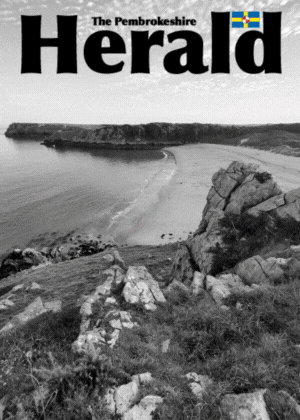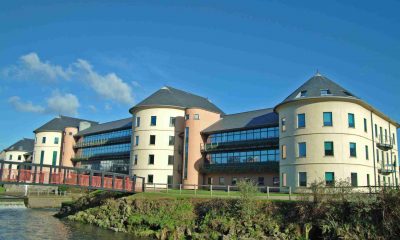Community
Demolition of St Thomas Green vandal-blighted building approved

A SOCIAL housing provider scheme to demolish a deteriorated vandal-blighted house in Haverfordwest has been approved by county planners.
Earlier this year, social housing provider Ateb Group Limited gave county planners prior notification of its plans to demolish The Grove, St Thomas Green.
In its application, it stated: “The building has been unoccupied for several years and its physical condition has deteriorated significantly over that time. It has become prone to vandalism and trespass and is becoming difficult to manage and secure.
“It’s demolition will allow the structure and resultant debris to be removed, improving the visual amenities of the locality. It will also enable the site to become readily available for a sensitive redevelopment in association with the adjacent Meyler House.”
It added: “The cleared site will become part of the adjoining Meyler House site, with proposals being prepared to redevelop and construct affordable elderly persons apartments and associated parking facilities.”
Agent Evans Banks Planning Limited, in a supporting statement said The Grove, adjoining Ateb’s head offices at Meyler House, received permission back in 2009 for the “Demolition of existing dwelling and replacement with apartments, houses and landscaped grounds.”
Conservation Area Consent was also granted at that time.
“Those permissions were not implemented and have long since lapsed, but nevertheless indicate that the principle of demolishing The Grove was deemed acceptable at that time to the local planning authority,” said Evans Banks Planning Limited.
“A pre-application enquiry has recently been presented before the local planning authority which seeks to reignite such redevelopment proposals but on a much larger site, incorporating Meyler House and its grounds into a comprehensive redevelopment scheme to create elderly persons apartments.”
It added: “This current submission seeks to renew that 2009 Conservation Area Consent given that the existing former dwelling house has now reached a physical state where its deterioration is causing concern.”
However, county planners determined that prior approval was needed before any demolition works take place, with details of tree protection while the works take place needed, along with a suitable method statement to minimise noise, dust and a strategy for dealing with hazardous materials should they arise during the demolition.
County planners have now granted Conservation Area approval for the plans.
A similar application by Ateb, for demolition works at the town’s former learning centre, near to the former county library, recently made subject to broadly similar conditions, has since been granted permission.
Community
Has the mystery of how Preseli rock got stonehenge finally been solved?
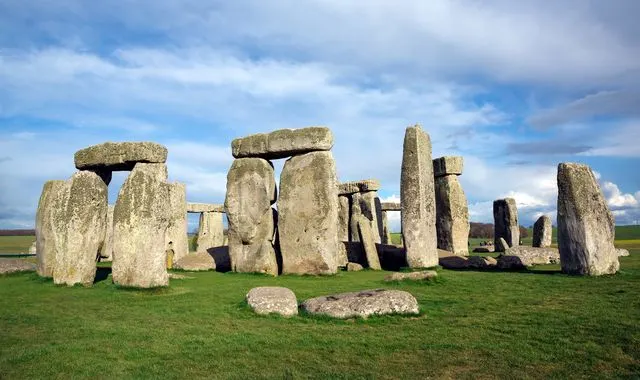
- ‘Lost’ Boulder Proves the Bluestones Were Transported from Wales by Glacier Ice – and NOT by Humans, Study Claims
A NEW study of the ‘lost’ Newall Boulder suggests it was transported by ice, potentially overturning the theory that humans moved the stones for Stonehenge.
How Neolithic humans might have transported so many huge boulders from Wales to Stonehenge is one of archaeology’s most enduring mysteries. However, a new study of a ‘lost’ boulder taken from the Stonehenge site over 90 years ago suggests that humans might not have moved the stones at all.
Dr Brian John, a retired geology lecturer from Durham University who lives in Pembrokeshire, argues that this bluestone boulder bears marks which suggest it was moved by glacial ice. This would undermine the common theory that the bluestone was quarried in the Preseli Hills of southwest Wales and manually transported to the Salisbury Plain.
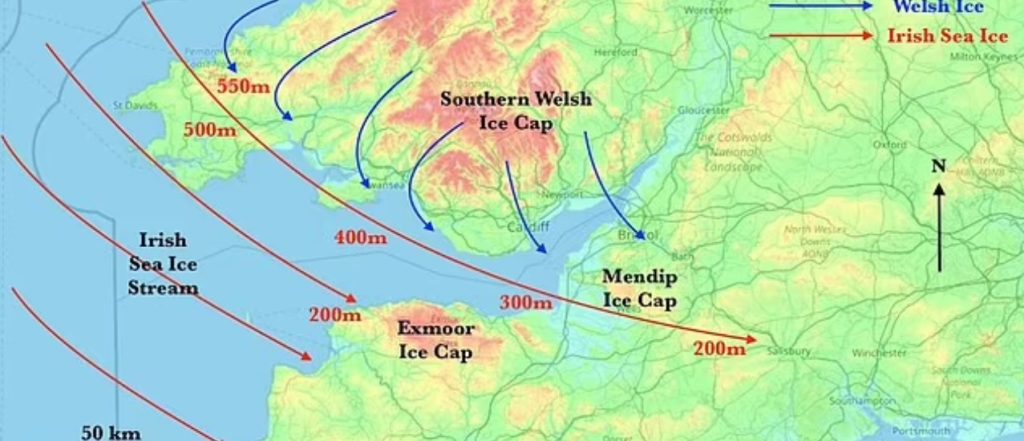
Dr John said: “I think it’s hugely significant because it supports the assumption I’ve had for some years that these are not humanly-transported.”
In addition to the tall Sarsen stones that make up Stonehenge’s distinctive appearance, the site is also home to around 80 smaller bluestones. It is generally agreed that these stones originate from the Preseli Hills of south-west Wales, but how they got to Stonehenge is often debated.
Dr John’s argument centres on an analysis of a bluestone boulder about the size of a human skull, known as the Newall boulder. This boulder was first excavated in 1924 by the geologists Colonel Hawley and Robert Newall. Hawley originally thought the rock was just a piece of rubbish and wanted to throw it away rather than analyse it. However, Newall saved the stone from the rubbish heap and placed it in a cardboard box in his attic alongside a number of other finds from the site.
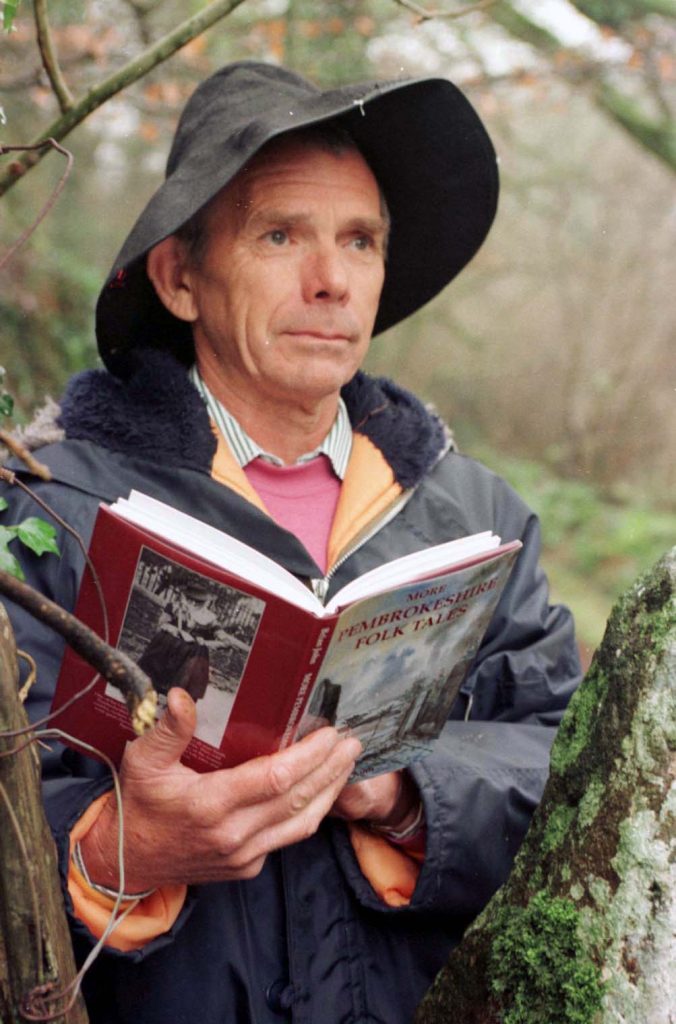
The boulder remained there until Newall passed it over to the Salisbury Museum shortly before he died in 1976. There was a brief burst of interest in the boulder around 1977, but then it was placed back into storage and effectively forgotten for another 46 years.
However, in 2022, Dr John found a reference to the boulder and asked the Museum Director, Adrian Green, if it was still in storage. On discovering that it was, he was given permission to examine it and undertake a careful examination of its surface features.
Through a detailed analysis of the boulder’s surface, Dr John identified a series of marks that suggest glacial, rather than human transport. “Glacially transported boulders tend to have facets,” Dr John explains. “That means they’ve got a number of different faces at angles to one another which actually indicated where a boulder has been abraded or, basically, sanded down.”
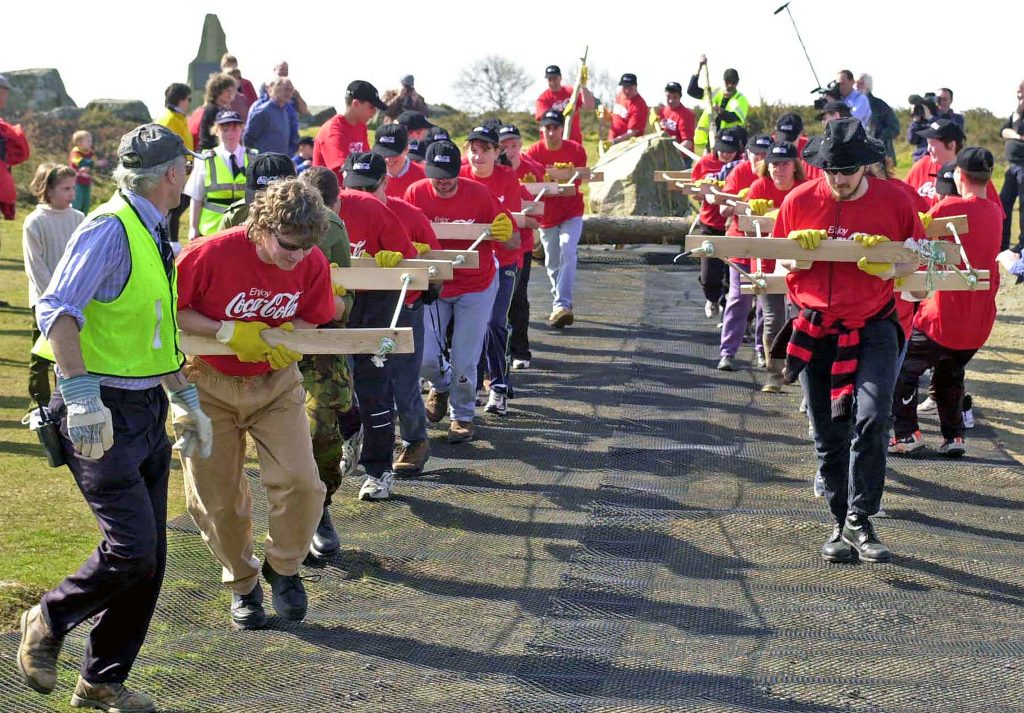
As boulders move with a glacier, they get flipped over from side to side, creating several different flat faces with rounded edges, just like the Newall boulder. In addition, the boulder bears a series of scratches and small fractures, called striations and chatter marks, which are often caused by glacial transport.
And although the Newall Boulder isn’t exactly the same type of rock as the other bluestones, Dr John says this is exactly what his theory would predict. He says: “It’s often claimed in popular articles that the bluestones are all made of spotted dolerite which is this type of igneous rock we get on the Preseli Hills but they’re actually about 30 different rock types. That enormous range of rock types is absolutely typical of the way that ice travels across the terrain and picks up boulders from here there and everywhere.”
Dr John suggests that this provides convincing evidence that the Newall boulder and all of the smaller bluestone boulders at Stonehenge were moved by glacier. His claims land him squarely at the centre of one of Stonehenge’s most contentious debates. The idea that the stones were transported to Salisbury Plain began with the geologist Herbert Henry Thomas in 1923. Although Thomas was quite spectacularly wrong about almost everything, the human transport theory is still extremely popular.
A team of researchers led by Professor Mike Parker Pearson of UCL have been some of the most active proponents of this theory, arguing that the stones were moved over land. Recently, Professor Pearson and his team even claimed to have discovered evidence which identifies the quarry of the Stonehenge bluestone, dating this to 3000 BC.
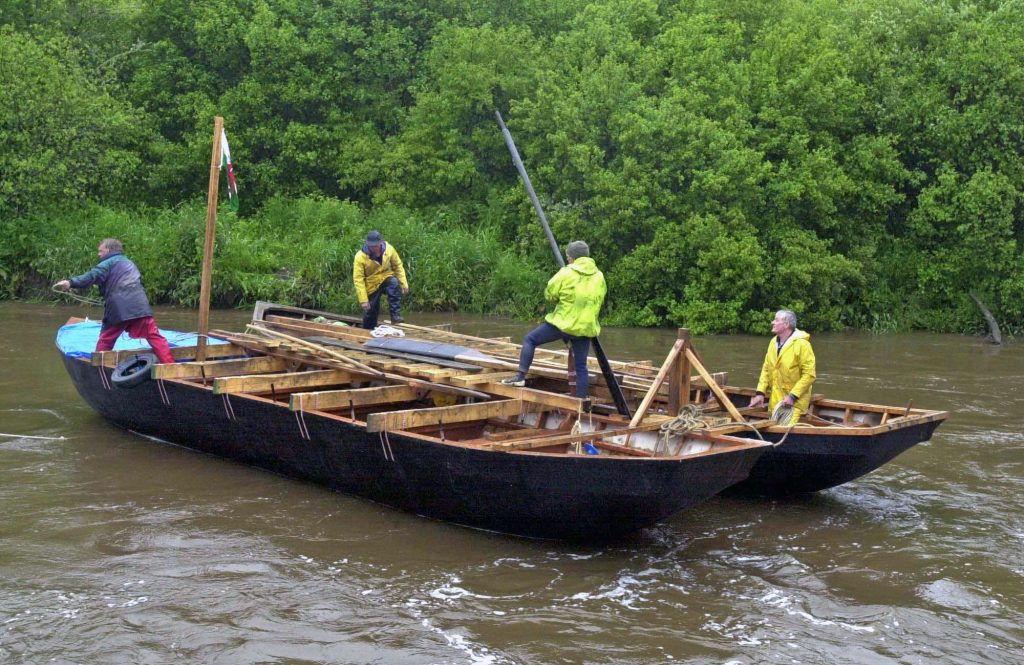
However, Dr John now says his discovery should “open up the debate” for a consideration of other theories. He says: “Herbert Thomas thought that because glacial transport was impossible they must have been carried by human beings. That’s now part of our national myth because people have not seriously questioned it before; it’s just been accepted as the truth.”
Instead of the orderly and rather deliberate building project we sometimes imagine Stonehenge to be, Dr John says: “I think it’s always been a bit of a shambles.” He argues that the Neolithic builders simply used the stones they had in their immediate vicinity, rearranging and moving the smaller bluestones as needed. And, when they eventually had to travel too far to gather more stones, the project was simply abandoned in the state we now find it. “It was a Neolithic cost-benefit analysis that eventually the costs of getting the stones were greater than the benefits that were coming from it,” he says.
However, the ultimate test for his theory would be cosmogenic dating – a test to determine how long rocks have been exposed to the surface by measuring their exposure to cosmic rays. If Dr John is right, the deeply weathered surface of the rocks should have been exposed to the elements for hundreds of thousands of years. Alternatively, if the stones were quarried they should only have been exposed to cosmic radiation for around 3,000 to 5,000 years.
While the debate over the origin of the stones is still very much alive, Dr John believes the evidence of weathering will remain strong. He concludes: “I’m very confident that if one or other university can get its act together and actually get this done these stones will be seen to have been subject to cosmogenic bombardment from the atmosphere for possibly hundreds of thousands of years. That would knock the quarrying idea on its head once and for all.”
Business
Application for 28 affordable homes in Solva submitted
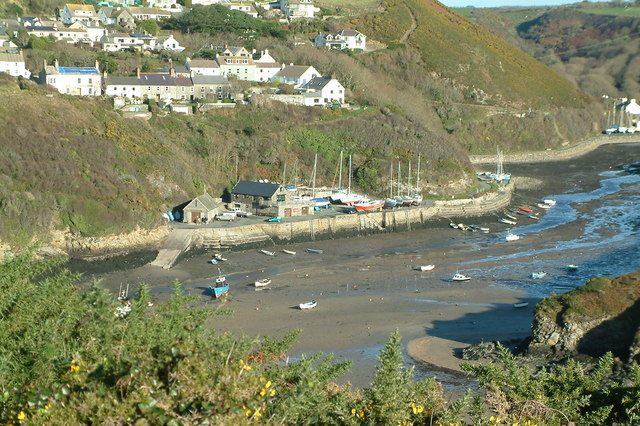
A SCHEME for 28 affordable homes on the site of a Pembrokeshire football pitch has been submitted to national park planners.
The application, by housing group Ateb – in partnership with Solva Community Land Trust – seeks permission for the two-stage development on land adjacent to Bro Dawel, Solva.
The hybrid application seeks full planning for the first stage: 17 social-rented dwellings, flexible open space, landscaping, highways and drainage infrastructure, and other associated works, with outline planning permission is sought for a second phase of a residential development of 11 dwellings.
A supporting statement accompanying the application says:”The greenfield site extends to approximately four acres and is currently laid out as two former football pitches, one full-sized pitch and one smaller pitch serving under-8/9s, of which are now overgrown. The site lies immediately adjacent to the settlement of Upper Solva, next to the A487 which links the settlement to St David’s to the north and Haverfordwest to the south,” adding: “The site is currently owned by Pembrokeshire County Council on long lease the community council/AFC.”
It goes on to say: “The scheme intends to provide a phased development of circa 28 high-quality affordable, sustainable dwellings and a new large multi-use green space, which will be carefully designed to operate diversly as a focal high quality outdoor space for the local community capable of being used, on occasion, as an under 11/12s football pitch.
“For the purposes of phase one (full planning), the design will include 17 dwellings, specially designed to respond to local character and context, as well as the diverse community greenspace to the west.
“For the purposes of phase two, 11 dwellings will be provided with a mix of one, two and three bedrooms.”
Referring to the first development of 17 homes, a design statement says: “The principle of the development is considered acceptable with the site being allocated by the local authority and in a sustainable location considering the rural nature of the area and the challenges this presents.
“Furthermore, the development proposes a scheme of 100 per cent affordable housing, supporting key principles of both local and national policy.”
The application will be considered at a later date.
Community
Two Pembrokeshire residents honoured in King’s Birthday List

PEMBROKESHIRE is celebrating the achievements of two distinguished locals who have been recognised in the King’s Birthday Honours. John Fletcher, a dedicated farmer, and Professor Andrew Campbell, a prominent academic, have both been awarded the MBE for their respective contributions.
John Fletcher: Champion of Shire Horses
John Fletcher, 70, the founder of Gentle Giants Shires in Moylegrove, has been honoured with an MBE for his services to the conservation of shire horses. His journey with these majestic animals began at the tender age of nine on his parents’ farm at Penrallt Uchaf. Inspired by his father, who had previously used a shire horse for ploughing, young John developed a lifelong passion for the breed.
In 2003, following the sale of the farm’s milking herd, Gentle Giants was established. Today, the organisation boasts a global following of 69,000 on Facebook and provides shire horses for weddings, funerals, and other events across the UK. The Gentle Giants have also featured on several television shows, including “Don’t Tell the Bride” and “Coast and Country”, as well as in the award-winning film “Calon Gaeth”.
John’s dedication to shire horses has not gone unnoticed. In 2021, during a Royal visit to Nevern, he and his shire horse, Prince George, met His Royal Highness. The future King praised John’s efforts, expressing his gratitude and interest in the farm’s breeding programme.
Gentle Giants remains a family-run venture, and the Fletcher family took to social media to celebrate John’s accolade. They expressed immense pride in his tireless work and commitment to training and promoting shire horses. “Not one to take things easy, he always has a new project on the go,” they shared. “Buyers often return due to the high standards achieved by the horses he has trained.”
John’s influence extends beyond the UK, with his horses working and competing as far afield as Norway and Italy. He is passionate about educating the public on the versatility of shire horses and enjoys welcoming visitors to the farm in Pembrokeshire.
Professor Andrew Campbell: Advocate for Tourism

Also honoured with an MBE is Professor Andrew Campbell of Goodwick, recognised for his services to tourism. Professor Campbell, who describes himself as “passionate about tourism, cake baking and swimming in the sea,” has made significant contributions to the field.
A professor of practice in tourism with the University of Wales, he is currently the chair of the Welsh Government’s Economic Ministerial Advisory Board. Until September 2021, he served as chair of the Wales Tourism Alliance, representing over 6,000 tourism businesses throughout Wales. The Welsh Government describes him as “a respected academic within tourism, a key economic sector,” noting his valuable insights into the challenges facing the tourism and skills sectors.
Living and working in north Pembrokeshire, Professor Campbell is known for his hands-on approach and commitment to enhancing the region’s tourism landscape. His recognition in the King’s Birthday Honours underscores the importance of his work and his dedication to the community.
-

 News4 days ago
News4 days agoTwo people killed, and two injured in A477 traffic collision
-

 Crime1 day ago
Crime1 day agoPembroke Dock residents ‘terrified’ as chaos and violence erupts in streets
-

 News3 days ago
News3 days agoAppeal for witnesses after two killed in A477 collision
-

 News6 days ago
News6 days agoYouth rescued after 40-metre jump off bridge at Neyland Marina
-

 Crime6 days ago
Crime6 days agoPembrokeshire postman admits driving after taking cocaine
-

 News6 days ago
News6 days agoFire crews tackle large garage blaze in Milford Haven
-

 Crime5 days ago
Crime5 days agoDock woman sentenced for jumping on police officer
-

 Community2 days ago
Community2 days agoTwo Pembrokeshire residents honoured in King’s Birthday List












